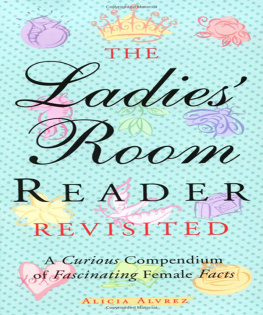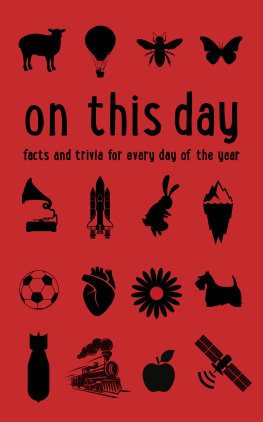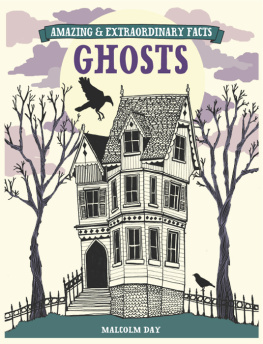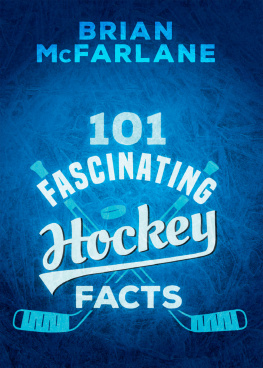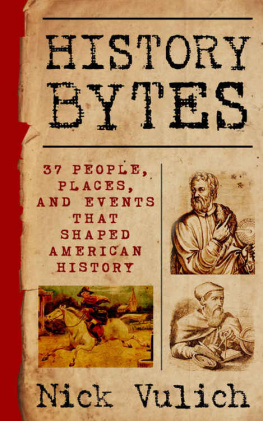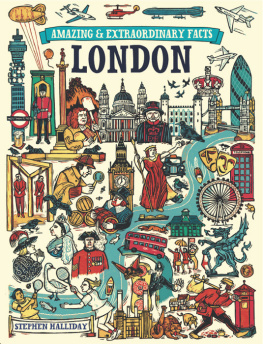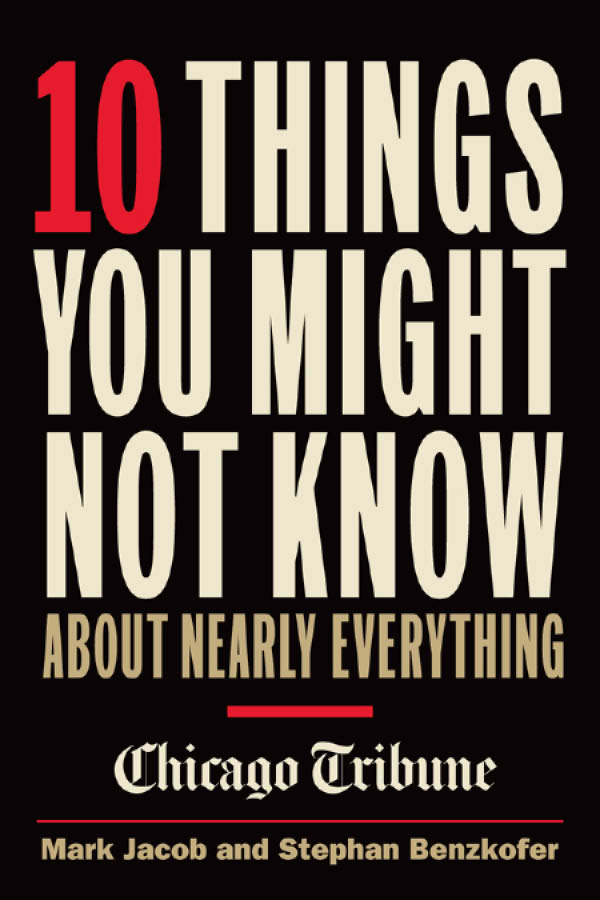
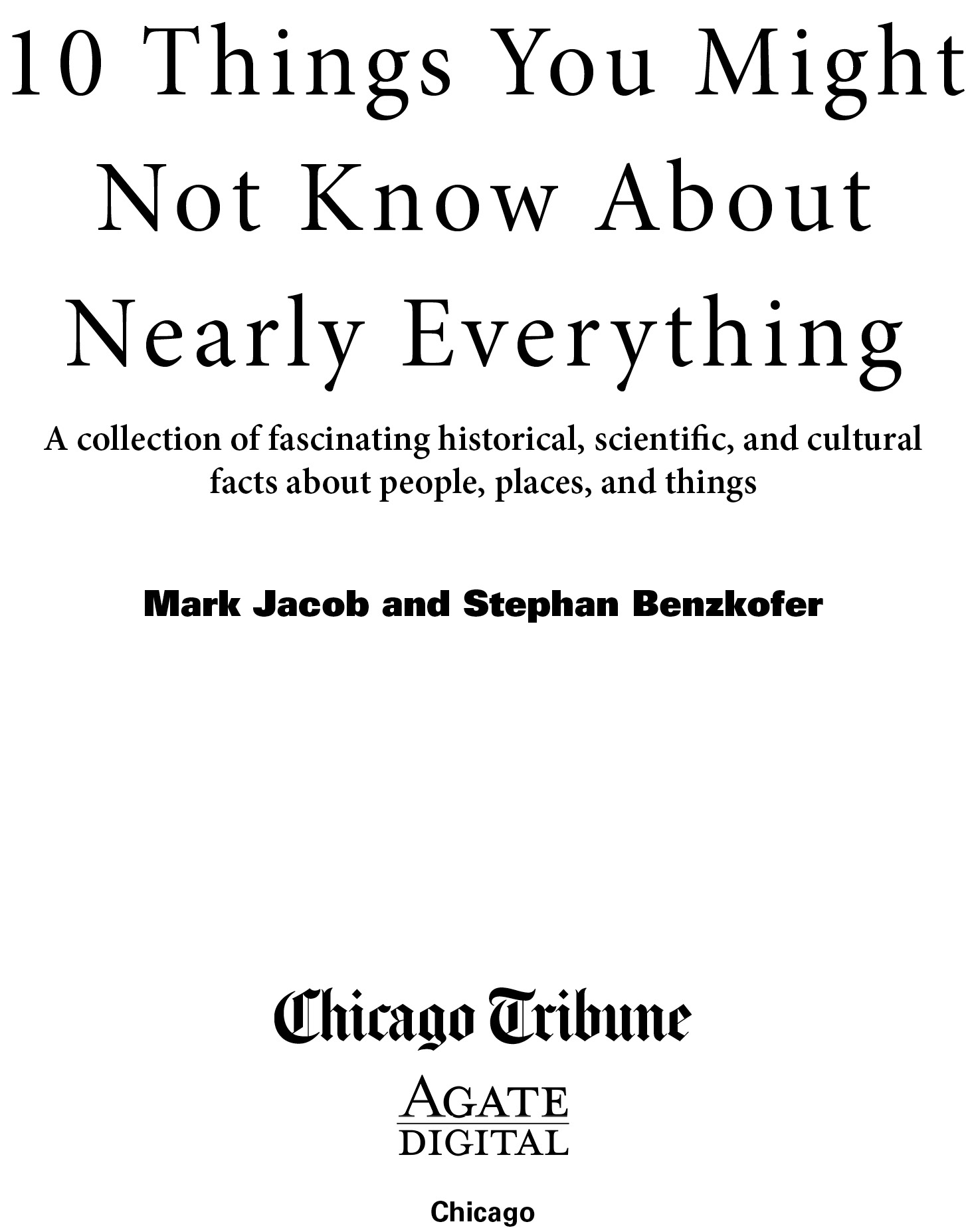
10 Things You Might Not Know About Nearly Everything
A collection of fascinating historical, scientific, and cultural facts about people, places, and things
By Mark Jacob and Stephan Benzkofer
Copyright 2012 by the Chicago Tribune.
All rights reserved. No part of this book may be reproduced or transmitted in any form or by any means, electronic or mechanical, including copying, recording, or by any information storage and retrieval system, without express written permission from the publisher.
Chicago Tribune
Tony W. Hunter, Publisher
Vince Casanova, President
Gerould W. Kern, Editor
R. Bruce Dold, Editorial Page Editor
Bill Adee, Vice President/Digital
Jane Hirt, Managing Editor
Joycelyn Winnecke, Associate Editor
Peter Kendall, Deputy Managing Editor
Ebook edition 1.1 October 2012
ISBN-10 1-57284-407-8
ISBN-13 978-1-57284-407-0
This book was created from the Chicago Tribunes popular feature 10 Things You Might Not Know by Mark Jacob and Stephan Benzkofer.
Agate Digital is an imprint of Agate Publishing. Agate books are available in bulk at discount prices. For more information visit agatepublishing.com.
TABLE OF CONTENTS
ARTS/CULTURE
10 Things You Might Not Know About Best-sellers
In The Da Vinci Code and other Dan Brown novels, characters are compelled to unravel mysteries at a frenetic pace. The same thing happened to Brown as a child. On Christmas and his birthdays, his parents hid his gifts, requiring him to solve puzzles and riddles to find the presents.
Matt Latimer, a former speechwriter for George W. Bush, wrote recently that unidentified people in the White House ... objected to giving author J.K. Rowling a presidential medal because the Harry Potter books encouraged witchcraft.
The Oxford English Dictionary credits the Kansas Times & Star with the first use of the term best sellerswith no hyphenin 1889. Since then, various book-sales rankings have appearedfrom The New York Times to Publishers Weekly to Amazon. They use different criteria, which means there is no strict definition of a best-seller. For purposes of this article, its simply a book that sells well. Some best-seller lists are quite exclusive. Publishers Weeklys analysis of its own 2005 lists found that of the estimated 200,000 books published that year, only 0.2 percent were best-sellers.
Richard Wrights 1940 novel Native Son was the first work by an African-American to be a Book of the Month Club selection, guaranteeing the novel a wide audience. But before agreeing to the sponsorship, the Book of the Month Club asked Wright to tone down the books sexual contentand he agreed. Despite Wrights notoriety, he often struggled financially. Near the end of his life as an expatriate in Paris, he earned money by writing liner notes for record albums.
Cormac McCarthys post-apocalyptic page-turner, The Road, may be the ultimate dark novel. In fact, the word dark appears in the book 95 times, with an additional 42 variants such as darkness and darkly. References to black (68) and gray (78) far outstrip those to green (10) and white (18).
Dr. Seuss editor, Bennett Cerf, bet him $50 that he could not write a book with a vocabulary of only 50 words. Seuss won by penning Green Eggs and Ham.
The first printing of Barack Obamas book Dreams From My Father in 1995 sold about 10,000 copies. At the time, Obama had not yet been elected a state senator. Now hes president, and more than 3 million copies are in print. Signed first editions have carried an asking price of up to $13,500.
Where did Chicagoan L. Frank Baum come up with the name of the magical land in The Wonderful Wizard of Oz? Baum said he was looking at his alphabetically arranged file cabinets and was inspired by the one labeled O-Z. But there are other theories, according to the debunking Web site Snopes.com. Perhaps its a tribute to Percy Shelleys poem Ozymandias. Or its a nod to the Land of Uz in the Bibles book of Job. Or its related to Charles Dickens pseudonym Boz. Or its a letter-shifting code for Baums native state of New York in which N has moved up one place in the alphabet to become O, and Y has done the same to become Z.
Jack Canfield, who co-authored Chicken Soup for the Soul with Mark Victor Hansen, said their manuscript was rejected by about 140 publishers, whose criticism included the assertion Its a stupid title. Well, that stupid title has appeared on more than 112 million books, including nearly 200 spinoffs such as Chicken Soup for the Soul in Menopause and Chicken Soup for the Soul: What I Learned from the Cat.
Staying Dry: A Practical Guide to Bladder Control had trouble finding a publisher. And even when Johns Hopkins University Press released the work by Kathryn L. Burgio, K. Lynette Pearce and Angelo J. Lucco in 1989, major bookstore chains took a pass. But when the Chicago Tribunes Ann Landers mentioned the book in her column, the dam broke. Staying Dry sold more than 100,000 copies in a year.
Sources: Why We Read What We Read by Lisa Adams and John Heath; Casanova Was a Book Love by John Maxwell Hamilton; Richard Wright: The Life and Times by Hazel Rowley; Dr. Seuss: American Icon by Philip Nel; New York Daily News; Sydney Morning Herald; GQ magazine; snopes.com; chickensoup.com; voanews.com; abebooks.com; common-place.org; publishersweekly.com.
10 Things You Might Not Know About Blonds
People have gone to great lengths to achieve blondness. In ancient Rome, people used pigeon poop; in Renaissance Venice, horse urine. Throughout history, nonblonds have also tried white wine, olive oil, ivy bark, soap and saffron.
Alfred Hitchcock cast so many blondes in his movies that film critics now write of Hitchcock blondes: beautiful, aloof, smart leading ladies. Think Grace Kelly, Tippi Hedren and Kim Novak. Hitchcock offered myriad reasons for his preference for light-haired actresses, including that they film better in black and white, but one quote seems to sum it up: Blondes make the best victims, Hitchcock said. Theyre like virgin snow that shows up the bloody footprints.
According to Victoria Sherrows Encyclopedia of Hair, there was an original dumb blonde. An 18th century French actress and prostitute named Rosalie Duthe was known for being very beautiful but incapable of intelligent conversation. She was satirized in a play called Les Curiosites de la Foire in 1775. But dumb is relative: Duthe was extremely wealthy as a mistress of royalty.
If the director yells Kill the blonde! on a movie set, hes probably ordering the crew to shut off an open-face, 2,000-watt spotlight.
Actress Marilyn Monroe colored her hair using a shade of blond called dirty pillow slip.
In junior high, Kurt Cobain was profiled in his school newspaper, the Puppy Press: Kurt is a seventh-grader at our school. He has blond hair and blue eyes. He thinks school is alright.... His favorite saying is Excuse you.
Actress Veronica Lakes peekaboo hairdo, with long blond hair over one eye, was a 1940s sensation. According to Life magazine, she had about 150,000 hairs on her head, with her tresses 17 inches long in front and 24 inches long in back. The downsides: Her hair catches fire fairly often when she is smoking and it has a bad habit of snagging on mens buttons. About the buttons, Life wrote: If Miss Lake were in fact the kind of girl she portrays on the screen, this might lead to all kinds of fascinating complications...


